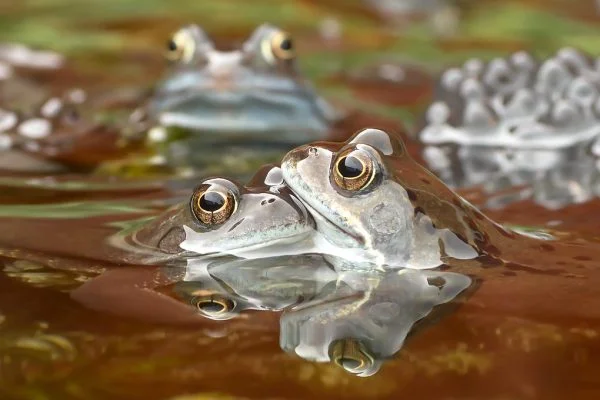Hyenas, often shrouded in myth and misunderstanding, are fascinating creatures that play a vital role in African ecosystems. These intelligent and adaptable animals exhibit a remarkable social structure, making them worthy of closer examination. Beyond their captivating behavior lies a linguistic layer – the diverse collective nouns used to describe them, offering a glimpse into their social dynamics and the complexities of their world.
Collective Nouns for Hyenas
Unlike some animals with singular collective nouns, hyenas boast a diverse vocabulary, each term reflecting the specific context and behavior of the group:
- Cackle: This widely used term, often associated with their distinctive vocalizations, signifies a group of hyenas making loud, laughter-like calls. It evokes a sense of social interaction, communication, and the complex vocal repertoire of these remarkable mammals.
Example: As the moon cast an ethereal glow upon the savanna, a cackle of hyenas echoed through the night air. Their unique vocalizations, a blend of cackles, whoops, and growls, filled the landscape, showcasing the vibrant communication within their social groups.
- Clan: This term, emphasizing family bonds, describes a group of hyenas that are closely related and live together in a complex social structure. It evokes a sense of cooperation, shared territory, and the matriarchal hierarchy that governs these societies.
Example: Led by a powerful matriarch, the clan of hyenas worked together to raise their young, hunt for food, and defend their territory. Their intricate social structure and strong familial bonds were evident in their coordinated movements and cooperative behaviors.
- Pack: While not as common as “clan,” this term is occasionally used to describe a group of hyenas that cooperate for hunting or other activities, not necessarily related by blood. It evokes a sense of temporary alliances, shared goals, and the adaptability of hyenas to form flexible social groups in specific situations.
Example: Driven by hunger, a pack of hyenas consisting of individuals from different clans temporarily joined forces to scavenge for food. Their coordinated movements and opportunistic behavior highlighted their ability to form alliances based on immediate needs.
- Confusion: This rarely used but historically referenced term signifies a large and noisy group of hyenas, often associated with feeding frenzies or chaotic situations. It evokes a sense of commotion, overwhelming presence, and the historical perception of hyenas as disruptive or unruly creatures.
Example: Early explorers recounted witnessing a confusion of hyenas descending upon a carcass, their raucous calls and aggressive interactions contributing to the historical misunderstandings surrounding their complex social behaviors.
Interesting Facts About Hyenas
Understanding these collective nouns deepens our appreciation for the diverse behaviors and remarkable adaptations of hyenas. But venturing deeper reveals their fascinating social structure, ecological significance, and the challenges they face:
Social Kings and Queens: Hyenas live in complex matriarchal societies, with females holding dominant positions and leading the hunt. This unique social structure, where cooperation and communication play vital roles, allows them to thrive in challenging environments.
Ecological Guardians: Hyenas play a crucial role in maintaining healthy ecosystems. As skilled scavengers and opportunistic predators, they help to control populations of herbivores and contribute to the decomposition process, preventing the spread of disease.
Facing Threats: Habitat loss, human-wildlife conflict, and negative stereotypes pose significant threats to hyena populations. Protecting their habitats, promoting responsible interactions, and fostering a deeper understanding of their ecological contributions are crucial for ensuring their continued existence.
Cultural Misconceptions: Throughout history, hyenas have been misunderstood and misrepresented, often depicted as villains or scavengers. Recognizing their complex social structures, intelligence, and ecological importance is crucial to dispelling these myths and fostering a more respectful perspective.
Final Thoughts
From the social “clan” working together to the noisy “cackle” echoing through the night, the diverse collective nouns for hyenas offer a glimpse into their multifaceted lives and enduring presence. By understanding these terms and appreciating the captivating nature of these creatures, we can move beyond negative stereotypes and celebrate their vital role in our natural world.
Also Read:






